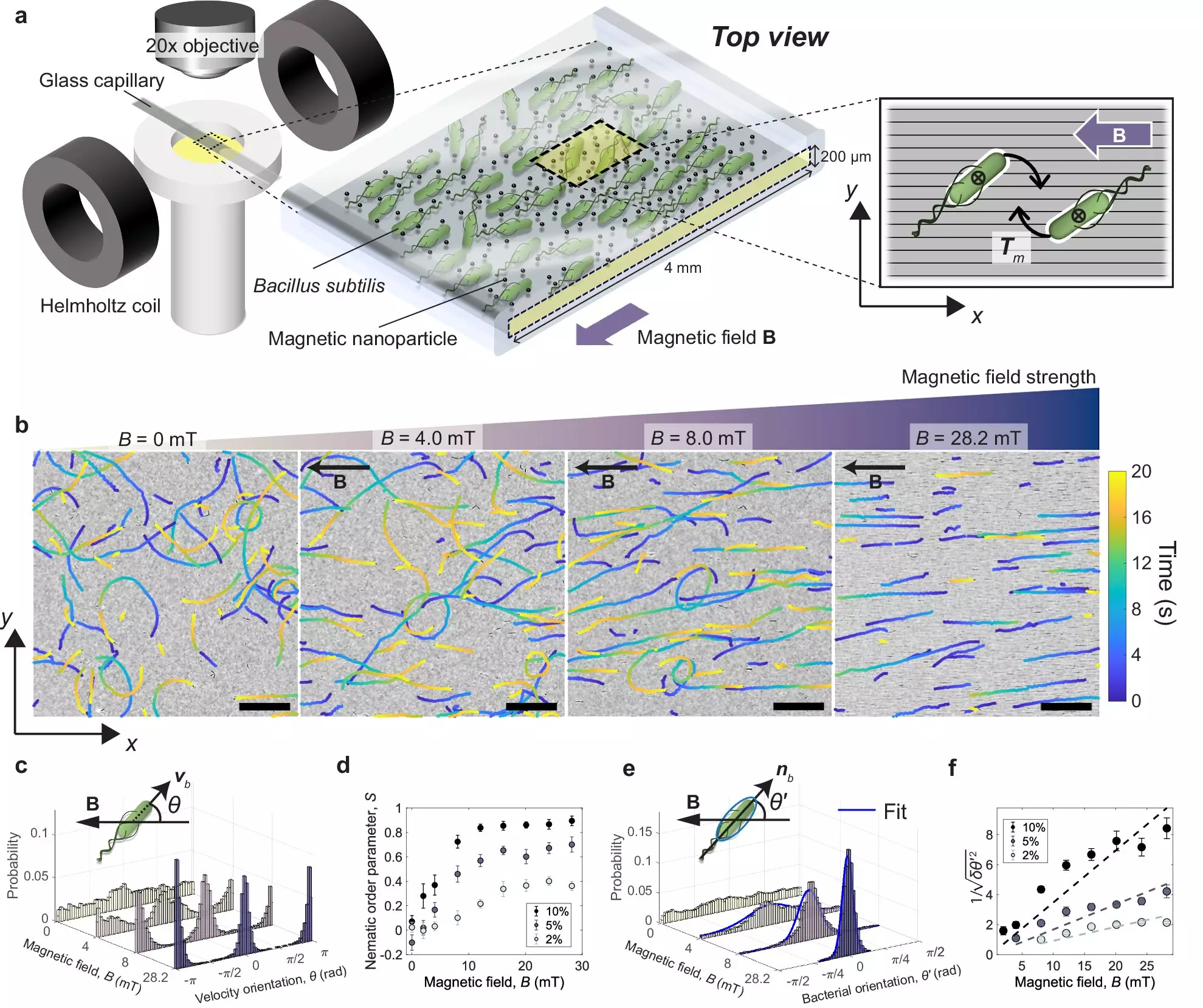Research conducted at Finland’s Aalto University has unveiled a groundbreaking method that utilizes magnets to align bacteria as they swim. The implications of this unique approach go beyond simply organizing bacteria; it serves as a valuable tool for a wide array of research areas, including complex materials, phase transitions, and condensed matter physics. The study, published in the journal Communications Physics, sheds light on the innovative use of magnets in microbiology.
Unlike magnetotactic bacteria, the bacteria used in the research are not inherently magnetic. However, by mixing them with millions of magnetic nanoparticles in a liquid solution, researchers were able to create a scenario where the rod-shaped bacteria act as non-magnetic voids within the magnetic fluid. When magnets are activated to produce a magnetic field, the bacteria are coerced to align themselves with the field to minimize energy expenditure. Any deviation from this alignment requires additional energy, making it less favorable for the bacteria.
Through the manipulation of the magnetic field strength, researchers were able to dictate the alignment of the bacteria. In the absence of the magnetic field, the bacteria displayed random swimming patterns. As the magnetic field intensified, the bacteria gradually aligned themselves, eventually swimming in close to perfect rows. The density of the bacterial population also played a role in the alignment process, with higher densities necessitating stronger magnetic fields to override the turbulent effects created by the swimming bacteria.
The concept of active turbulence, generated by the collective movement of individual units like bacteria, sperm, or epithelial cells, is a common phenomenon in nature. This form of turbulence, observed in dense bacterial suspensions, presents unique opportunities for studying active matter physics. The ability to control bacterial movement and turbulent flow opens up avenues for investigating dynamic patterns emerging from individual behaviors, akin to flocks of birds operating on a microscopic level.
Beyond the novelty of aligning bacteria with magnets, the research holds significant implications for various scientific domains. By mastering the manipulation of active matter, researchers can explore applications in self-sustaining materials, microrobotics, biological engines for energy harvesting, and targeted drug delivery on a microscopic scale. The versatility of the magnetic alignment method extends its utility beyond bacterial systems, offering a robust tool for advancing the study of active matter across different disciplines.
As the researchers look to the future, they aim to expand upon their findings by investigating the effects of dynamic magnetic fields, such as rotating fields, on bacterial alignment. This exploration promises to further enhance our understanding of how magnetic manipulation can influence bacterial behavior and pave the way for novel research avenues in phase transitions and condensed matter physics. By continuously refining their techniques, the researchers strive to unlock new possibilities in the realm of active matter research.
The utilization of magnets to control bacterial alignment represents a significant leap forward in scientific inquiry. By harnessing the power of magnetic fields to orchestrate the movement of bacteria, researchers have unlocked a wealth of opportunities for studying active matter and exploring diverse applications across various disciplines. This innovative approach not only pushes the boundaries of microbiological research but also opens doors to transformative discoveries in materials science, robotics, and healthcare.


Leave a Reply